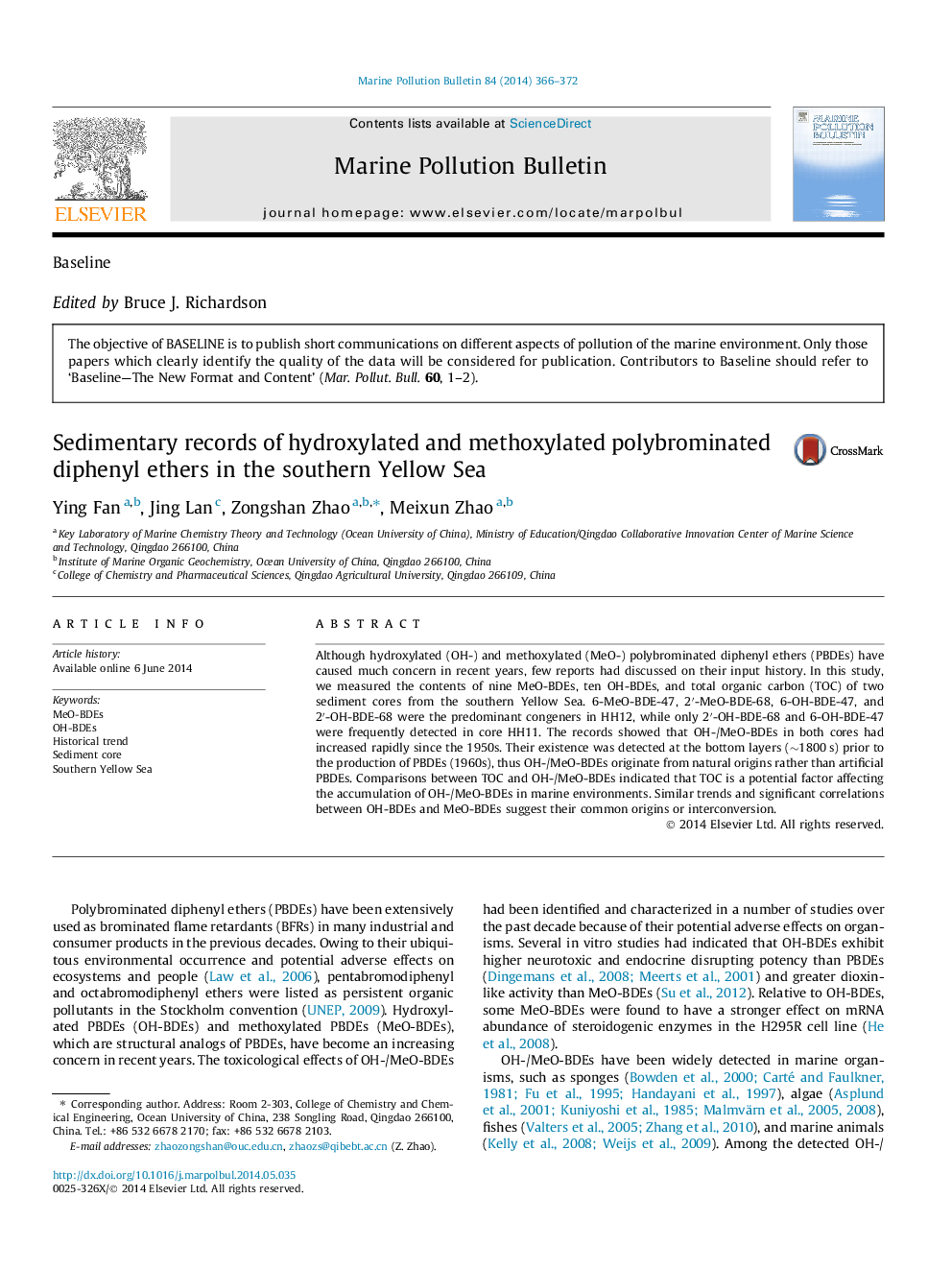| Article ID | Journal | Published Year | Pages | File Type |
|---|---|---|---|---|
| 6358710 | Marine Pollution Bulletin | 2014 | 7 Pages |
â¢The historical trends of OH-/MeO-BDEs are reconstructed in southern Yellow Sea.â¢The detections of OH-/MeO-BDEs are earlier than the production of artificial PBDEs.â¢Interconversion of OH-/MeO-BDE pairs is suggested to occur in sediments.â¢The accumulation of OH-/MeO-BDEs may be controlled by TOC.
Although hydroxylated (OH-) and methoxylated (MeO-) polybrominated diphenyl ethers (PBDEs) have caused much concern in recent years, few reports had discussed on their input history. In this study, we measured the contents of nine MeO-BDEs, ten OH-BDEs, and total organic carbon (TOC) of two sediment cores from the southern Yellow Sea. 6-MeO-BDE-47, 2â²-MeO-BDE-68, 6-OH-BDE-47, and 2â²-OH-BDE-68 were the predominant congeners in HH12, while only 2â²-OH-BDE-68 and 6-OH-BDE-47 were frequently detected in core HH11. The records showed that OH-/MeO-BDEs in both cores had increased rapidly since the 1950s. Their existence was detected at the bottom layers (â¼1800Â s) prior to the production of PBDEs (1960s), thus OH-/MeO-BDEs originate from natural origins rather than artificial PBDEs. Comparisons between TOC and OH-/MeO-BDEs indicated that TOC is a potential factor affecting the accumulation of OH-/MeO-BDEs in marine environments. Similar trends and significant correlations between OH-BDEs and MeO-BDEs suggest their common origins or interconversion.
